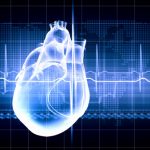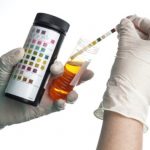 Another week of interesting health news has gone by, and we at Bel Marra have taken the time to bring you some of our best articles in your weekly health news round-up. Outside food pain can literally stop a person in their tracks, as simply walking causes unbearable discomfort. We’ve provided an article about the most common causes and various treatments you can try today.
Another week of interesting health news has gone by, and we at Bel Marra have taken the time to bring you some of our best articles in your weekly health news round-up. Outside food pain can literally stop a person in their tracks, as simply walking causes unbearable discomfort. We’ve provided an article about the most common causes and various treatments you can try today.
Menopause is synonymous with female anatomy, but did you know that men can also be affected by a similar hormone imbalance? We cover this in great detail in our article about male menopause and how men can become affected. Lastly, to better round off your week, we have included more obscure topics touching on anteroseptal infarct of the heart as well as urobilinogen in the urine.
Outside foot pain: Causes, symptoms, treatment, and exercise tips
Advertisement
Lateral foot pain (outside foot pain) can literally stop a person in their tracks. There are a lot of causes of outside foot pain. Whether you are a runner or simply like to get out and about, lateral foot pain is something that can be frustrating and very difficult to ignore.
Foot pain can occur on the inside of the foot, which is called medial foot pain, or on the outside, which is lateral foot pain. The outside of the foot is a common location for pain. It is made up of bones, muscles, tendons, and connective tissue. Various tissue types can be pain generators in the lateral foot area. The pain outside of the foot can be mild or severe. It can also appear gradually or come on suddenly in the form of a stabbing pain. Continue reading…
 Do men go through menopause?
Do men go through menopause?
When you hear the word menopause, you probably think of the change in a woman’s life, but did you know that men over 50 undergo their own type of menopause? The term “male menopause” is being used to describe the symptoms that men experience over the age of 50. The main difference between male menopause and menopause that women experience comes down to hormones.
For women, a drop in estrogen is what brings on menopause. In men, the decline of the male hormone testosterone is not nearly as drastic, so symptoms are usually not attributed to it. In fact, lifestyle habits and other factors are more so to blame. Continue reading…
 What causes an anteroseptal infarct? Symptoms, treatment, and prevention
What causes an anteroseptal infarct? Symptoms, treatment, and prevention
The term “anteroseptal” refers to a location of the heart in front of the septum — the wall of tissue that separates the left and right sides of the heart. An infarct is an obstruction of blood supply to an organ or region of tissue, which can lead to cell death.
Knowing the definition, it’s easy to understand how an anteroseptal infarct can lead to permanent cardiac damage or even loss of life. Continue reading…
 Targeting age-related disease to increase bone mass and strength
Targeting age-related disease to increase bone mass and strength
Senescent cells, which are the cells associated with aging, have been linked to bone loss in mice. This discovery could help healthcare experts find ways to target age-related diseases, especially those associated with bone mass and strength.
Advertisement
An estimated 44 million women and men age 50 and older in the United States are impacted by low bone mass and osteoporosis. While bone is constantly being broken down and replaced, people who suffer from osteoporosis don’t have new bone development after the breakdown of old bone. Until now, little was known about the role of senescent cells when it comes to age-related ailments like osteoporosis. Continue reading…
 What does urobilinogen in urine mean? Causes, symptoms, tests, and treatment
What does urobilinogen in urine mean? Causes, symptoms, tests, and treatment
If you have urobilinogen in your urine, your doctor will likely inform you of it during a routine urinalysis. Urobilinogen is a by-product of bilirubin, which is a yellow compound processed by your liver that occurs in the normal catabolic pathways responsible for breaking down red blood cell products through hemolysis. Urobilinogen is formed in the intestines, and half of it is reabsorbed for normal circulation and excreted through your urine, while what remains is excreted in the stool.
When bilirubin is created, it produces urobilinogen, which can be used as a measure of your liver function. Continue reading…
